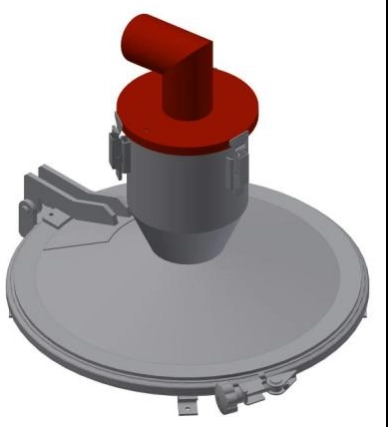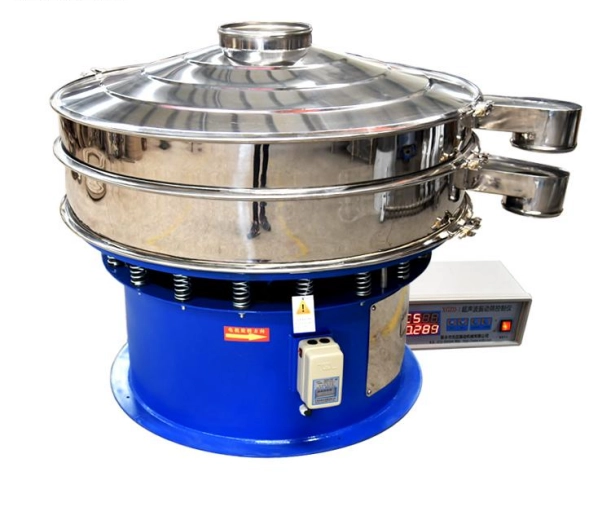Content Menu
● Understanding Powder Sieving and Its Importance
>> Why Sieve Capacity Matters
● Factors Influencing Powder Sieve Size Selection
>> Particle Size Distribution of the Powder
>> Production Throughput Requirements
>> Type of Sieve and Equipment Compatibility
>> Filling Capacity and Sample Size
>> Material Properties
>> Regulatory and Industry Standards
● How to Calculate Required Powder Sieve Capacity
>> Step 1: Define Production Requirements
>> Step 2: Determine Sieve Screen Area Needed
>> Step 3: Choose Sieve Diameter and Number of Sieves
>> Step 4: Verify Filling Capacity Limits
>> Practical Considerations
● Types of Powder Sieves and Their Impact on Capacity
>> Flat Vibrating Sieves
>> Tumbler and Rotary Sieves
>> Ultrasonic Sieves
>> Multilayer Sieve Stacks
● Best Practices for Maintaining Sieving Efficiency
● Common Challenges and How to Address Them
>> Clogging and Blinding
>> Under or Over-Utilization of Sieve Capacity
>> Material Degradation
● Frequently Asked Questions
In industrial and manufacturing processes, sieving powder materials is a critical step to ensure product quality and consistency. Selecting the correct powder sieve capacity and size for your production line can significantly improve efficiency, product uniformity, and operational throughput. This article explores how to choose the right powder sieve size and capacity tailored to your production requirements.

Understanding Powder Sieving and Its Importance
Powder sieving is a process of separating particles in a bulk powder material based on size by passing it through a mesh screen. The sieve's aperture size determines which particle sizes pass through and which are retained. Proper sieving ensures uniform particle size distribution, which is vital for product quality, processing performance, and regulatory compliance.
Why Sieve Capacity Matters
Sieve capacity refers to the volume or weight of powder a sieve can handle effectively during processing. An undersized sieve will bottleneck the production line, causing slower throughput and possibly compromising quality due to under-processing. Conversely, an oversized sieve may be inefficient, costly, or unnecessary for the application, leading to excessive capital and operational costs.
Proper selection balances capacity with particle size requirements, equipment capabilities, and material properties to optimize production flow.
Factors Influencing Powder Sieve Size Selection
Particle Size Distribution of the Powder
The material characteristics heavily impact the choice of sieve size. Coarser powders require sieves with larger apertures, while fine powders need finer meshes.
- Coarse powders: Use larger mesh openings to allow quick passage and avoid clogging.
- Fine powders: Require smaller apertures to achieve accurate separation and avoid loss of fine fractions.
Understanding the typical size distribution of the powder feedstock helps determine the minimum sieve aperture required.
Production Throughput Requirements
The daily or hourly volume of powder processed directly determines the needed sieve capacity and size. Larger production rates need bigger sieves or multiple sieves operating in parallel to avoid bottlenecks.
Consider:
- Expected powder feed rate (kg/hr or tons/hr)
- Batch size or continuous feed system capacity
- Required sieving speed matching downstream processes
Type of Sieve and Equipment Compatibility
Sieve size selection is also dictated by the dimension and design of the sieving equipment available.
- Sieve diameter: Must match the machine's specifications to ensure proper fitting and optimal performance.
- Machine capabilities: Different sieving machines offer various amplitude, vibration frequencies, and operational cycles that influence sieve capacity.
- Stack height and number of sieve layers: Multi-layer sieves increase capacity and allow simultaneous separation by size fractions.
Choosing the right sieve size means matching the sieve diameter and specs with the shaker or screener to avoid inefficiencies or mechanical damage.
Filling Capacity and Sample Size
Overloading a powder sieve reduces sieving efficiency and increases the risk of clogging. Underloading leads to inefficient equipment use.
- Filling capacity: Determine the optimal weight or volume of powder per sieving cycle considering sieve surface area and mesh size.
- Sample size: For quality control testing, smaller sample sizes with corresponding sieves provide accurate analysis.
Balancing filling capacity ensures consistent particle separation and maximal throughput.
Material Properties
Beyond particle size, other material properties impact sieve size selection:
- Moisture content: High moisture powders may agglomerate, requiring coarser meshes or anti-clogging designs.
- Flowability: Poorly flowing powders may need larger sieves or vibratory aids.
- Abrasiveness and corrosiveness: Material hardness and chemical reactivity determine sieve mesh and frame material choice, often stainless steel for durability.
Regulatory and Industry Standards
Some industries have specified standards for sieve sizes and sieving processes:
- Food, pharmaceuticals, and cosmetics typically require sieving compliant with official particle size standards.
- Construction and mining may utilize larger sieves with broader tolerance.
Ensure selected sieve sizes meet industry and regulatory expectations.
How to Calculate Required Powder Sieve Capacity
To properly size a sieve system, calculate the required sieving capacity based on several parameters:
Step 1: Define Production Requirements
Identify:
- Powder feed rate (mass per time unit)
- Desired particle size distribution post-sieving
Step 2: Determine Sieve Screen Area Needed
Sieve capacity is roughly proportional to the screen surface area. Larger area means more material can pass through per unit time.
Calculate:
$$
\text{Required Screen Area} = \frac{\text{Feed Rate (kg/hr)}}{\text{Material Permeability Factor} \times \text{Throughput Rate per Area (kg/m²·hr)}}
$$
The material permeability factor depends on powder properties such as flowability and particle size.
Step 3: Choose Sieve Diameter and Number of Sieves
Based on the required screen area, calculate the number or diameter of sieves for the production line.
For example, if one sieve of 0.5 m diameter inadequately handles the throughput, more sieves or larger diameters are necessary.
Step 4: Verify Filling Capacity Limits
Ensure that the powder volume loaded at once does not exceed the sieve's filling capacity, which depends on mesh size and vibration.
Practical Considerations
- Select a slightly larger capacity than estimated to accommodate variability.
- Consider space, cost, and maintenance implications.
Types of Powder Sieves and Their Impact on Capacity
Flat Vibrating Sieves
Widely used for fine powders, these sieves vibrate horizontally. Their capacity depends on sieve diameter and vibration amplitude.
Tumbler and Rotary Sieves
Ideal for larger capacities and coarser powders, providing efficient screening over long processing times.
Ultrasonic Sieves
Use ultrasonic waves to prevent clogging in very fine powders, allowing smaller aperture sizes without capacity loss.
Multilayer Sieve Stacks
Stacking multiple sieves vertically enables simultaneous separation into multiple size fractions, increasing effective capacity.
Best Practices for Maintaining Sieving Efficiency
- Regularly inspect and clean sieve meshes to prevent clogging and wear.
- Replace damaged or worn meshes promptly.
- Match sieve sizes strictly to production requirements; avoid unnecessary over-sizing.
- Monitor and adjust vibration settings for optimal throughput.
- Train operators on correct loading amounts and sieving procedures.
Common Challenges and How to Address Them
Clogging and Blinding
Fine, sticky powders tend to clog sieve apertures. Using ultrasonic sieves or selecting coarser apertures can help.
Under or Over-Utilization of Sieve Capacity
Measure throughput regularly and adjust sieve size or number accordingly to maintain system balance.
Material Degradation
If vibration or sieving parameters crush or degrade powders, choose gentler equipment or sieves designed for delicate materials.
Frequently Asked Questions
Q1: How do I know what mesh size to choose for my powder?
A1: Identify the particle size distribution of your powder and select a sieve aperture slightly smaller than the largest acceptable particle size to ensure proper separation.
Q2: Can I use one sieve size for all powder types?
A2: No. Different powders have different particle sizes, moisture content, and flow properties, requiring different sieve sizes for optimal performance.
Q3: How does sieve diameter affect capacity?
A3: Larger diameter sieves provide greater screen surface area, leading to higher capacity and throughput.
Q4: What happens if I overload my sieve?
A4: Overloading causes inefficient sieving, clogging, and reduced product quality due to improper particle separation.
Q5: Are there standard sieve sizes for industrial applications?
A5: Yes, many industries follow standard sieve sizes and mesh numbers defined by regulatory organizations, especially food and pharmaceutical sectors.

[1] https://kindle-tech.com/faqs/how-to-choose-sieve-size
[2] https://max.book118.com/html/2017/0611/113858366.shtm
[3] https://www.retsch.com/files/8785/expert-guide-sieving.pdf
[4] https://patents.google.com/patent/CN107309167A/zh
[5] https://www.globalgilson.com/blog/sieve-sizes
[6] https://patents.google.com/patent/CN101678402A/zh
[7] https://www.pharmaguideline.com/2007/02/official-standards-of-powders-sieves-size-separation.html
[8] https://patents.google.com/patent/WO2020216351A1/zh
[9] https://bulkinside.com/bulk-solids-handling/screening-separation/optimizing-particle-size-distribution-through-powder-sieving/
[10] https://patents.google.com/patent/WO2013078757A1/zh
Hot Tags: China, Global, OEM, private label, manufacturers, factory, suppliers, manufacturing company










































 .
. 